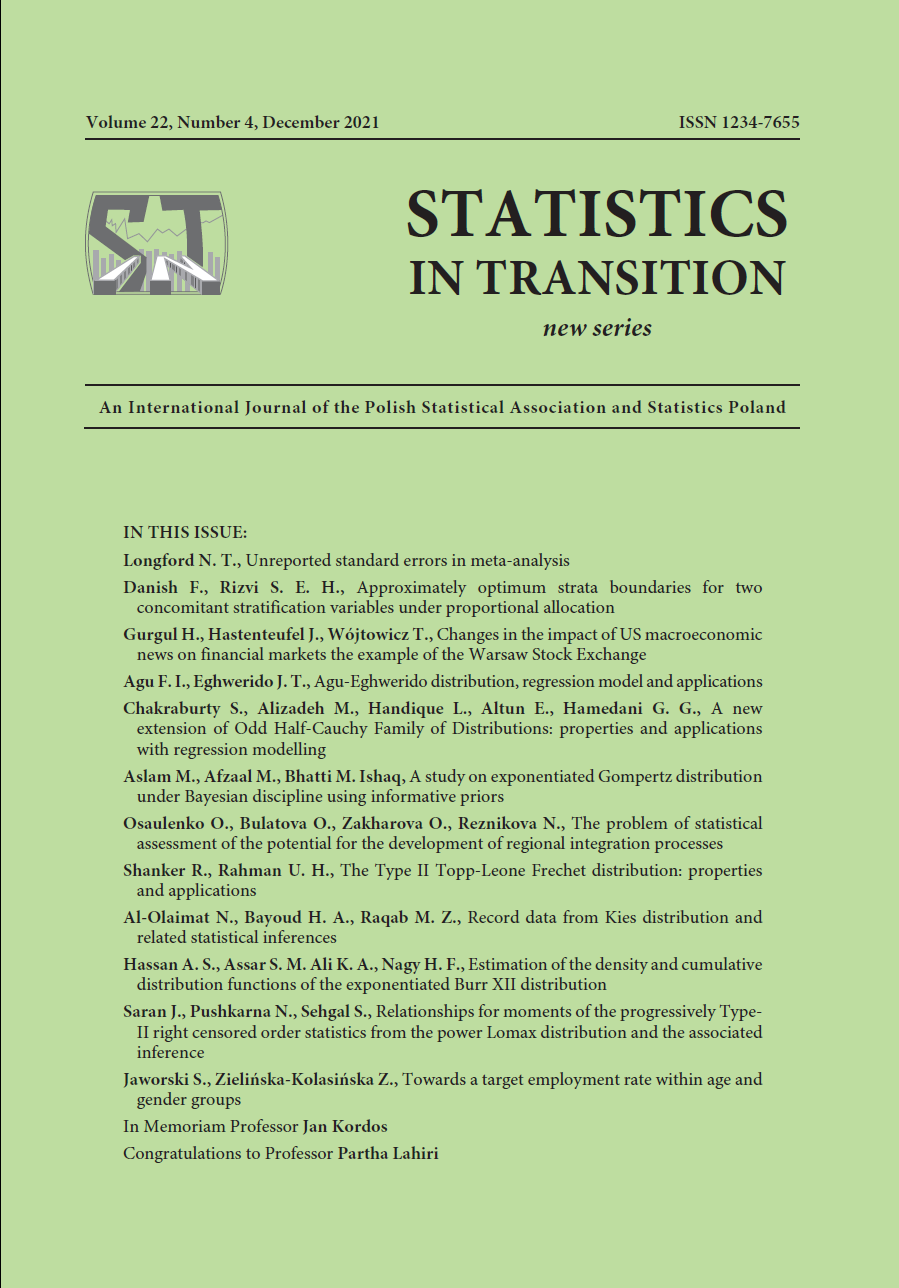ARTICLE
ABSTRACT
The present article illustrates the use of integrated indices to evaluate the potential for the development of regional integration processes. The study examines a new research and methodological approach, which involves the use of an integral index of the potential for the development of integration processes, proposed with regard to the intensity of the influence of internal and external factors on integrative relations development. The application of the above-mentioned integrated index in a comparative analysis of the potential for the development of integration processes allows a comprehensive and quantitative description of the current regional integration processes taking place in the modern economy under certain regional models.
KEYWORDS
integrated index, regional integration, EU, NAFTA, ASEAN, APTA
REFERENCES
Balassa, B., (1967) Trade Creation and Trade Diversion in the European Common. The Economic Journal, Vol. 77, No 305, pp. 1–21.
Bulatova, O., Kuryliak, V., Savelyev, Y., Zakharova, O., Sachenko, S., (2019) Modeling the Multi-Dimensional Indicators of Regional Integration Processes. 2019 10th IEEE International Conference on Intelligent Data Acquisition and Advanced Computing Systems: Technology and Applications (IDAACS), Metz, France, pp. 1024–1029, DOI: 10.1109/IDAACS.2019.8924430.
Bulatova, O. V., Panchenko, V. G., (2018) Regional trade agreements and the dialecrtics of protectionism and liberalism: new vectors of competitiveness. Bulletin of Mariupol State University, Series: Economics, Mariupol, ??. 114–125.
Comparative Regional Integration Studies (UNU-CRIS): Annual Report, (2008). United Nations University-Comparative Regional Integration Studies Brugge, Belgium, p. 37.
De Lombaerde, P., Dorrucci, E., Genna, G., Mongelli, F., (2011). Composite Indexes and Systems of Indicators of Regional Integration. In: P. De Lombaerde, R. Flôres, L. Iapadre, and M. Schulz (eds), The Regional Integration Manual, Quantitative and Qualitative Methods, London: Routledge, pp. 323–346.
Gor, S., (2017). The African Regional Integration Index: A Selective Audit, Trade and Development Review, 9, pp. 86–98.
König, J., (2017). The EU Index of Integration Effort, DOI: 10.1007/978-3-319-50860- 3_3.
Lombaerde, P., Pietrangeli, G., Weeratunge, C., (2008) Systems of Indicators for Monitoring Regional Integration Processes: Where Do We Stand? The Integrated Assessment Journal, 8(2), pp. 39–67.
Lombaerde, P., Estevadeordal, A., Suominen, K., (2008) Governing Regional Integration for Development. Monitoring Experiences, Methods and Prospects, Ashgate Publishing, Ltd., p. 290.
Makkonen, T., (2016). Measuring cross-border regional integration with composite indicators: The Oresund Integration Index, DOI: 10.4018/978-1-5225-0714- 7.ch001.
Mursalova, Kh. N., (2019). Methodological approaches to assessing the effectiveness of international integration associations. Reports, 6, pp. 194–199, DOI: 10.32014/2019.2518-1483.188.
Osaulenko, O., Reznikova, N., Panchenko, V., (2018). Indicators of International Trade Orientation of Ukraine in the Context of Assessment of the Effectiveness of its Export. Statistics in Transition new series, Issue 19, pp. 119–134.
Park, C.-Y., Claveria, R., (2018) Does regional integration matter for inclusive growth? Evidence from the multidimensional regional integration index, ADB Economics Working Paper Series, No. 559, p. 62.
Reznikova, N., Ivashchenko, O., (2018)/ Projections of deglobalization in the contemporary international economic relations in the context of the paradigm of globalism. Bulletin of Mariupol State University, Series: Economics, Mariupol, ??. 98–106.
Reznikova, N., Ivashchenko, O., (2016), “Integration manifestations of neodependence: risks of regional interdependence in the context of globalization controversies”, Investytsiyi: praktyka ta dosvid, Vol. 6, pp. 7–11.
Russett, B., Starr, H., Kinsella, D., (2009) World Politics: The Menu for Choice. Wadsworth: Cengage Learning, p. 552.
Shnyrkov, O., Rogach, O., Reznikova, N., Nanavov, A., (2020). Ukraine’s export diversification: the impact of economic integration and disintegration. Journal Global Policy and Governance, ,Vol. 9 No. 1, ??. 3–18, DOI: https://doi.org/10.14666/2194-7759-9-1-001.
Stanickova, M., Melecký, L., (2018). Understanding of resilience in the context of regional development using composite index approach: the case of European Union NUTS-2 regions. Regional Studies, Regional Science, 5:1, pp. 231–254, DOI: 10.1080/21681376.2018.1470939.
UNCTADSTAT, Methodology and Classification [Electronic resource] – Mode of access: http://unctadstat.unctad.org/UnctadStatMetadata/Classifications/Methodology& Classifications.html.
WTO, Regional Trade Agreements Information System (RTA-IS) [Electronic resource]. – URL: http://rtais.wto.org/UI/PublicMaintainRTAHome.aspx.
